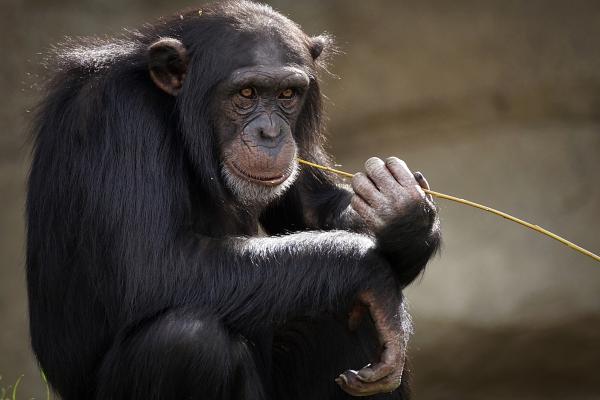Chimpanzees (Pan troglodytes) are one of the primates genetically closest to humans, exhibiting remarkable intelligence and behavior. With long black hair, bare faces and palms, standing about 1.5 meters tall, they can walk upright on two legs. Despite this close relation, chimpanzees face serious survival challenges mainly caused by human activity and environmental changes.

Illegal hunting is the biggest threat to chimpanzees. Lax firearm regulations in Africa lead to widespread poaching. Miners, logging camp workers, and armed groups hunt chimpanzees for bushmeat. Due to their large size and meat yield, they are preferred targets over smaller mammals.
Before 1990, much of Central Africa's forests were inaccessible. Logging concessions, road construction, and growing human populations have drastically reduced chimpanzee habitats, pushing them into farmland and increasing conflicts. Habitat loss diminishes food sources and intensifies competition within and between species.
Chimpanzees are highly susceptible to Ebola virus, which has affected 14% of their range since 1990, causing massive mortality. Their genetic similarity to humans also makes them vulnerable to respiratory diseases like anthrax transmitted from humans. Tourism must be strictly controlled to prevent disease spread.

Orphaned infants from hunting are sometimes captured for illegal pet trade. Rescue efforts exist but parental care is irreplaceable.
Farmers view chimpanzees as crop pests and may poison them, further threatening populations.
There are four subspecies with estimated populations:
P. t. troglodytes: 140,000 individuals
P. t. ellioti: 6,000–9,000 individuals
P. t. schweinfurthii: 181,000–256,000 individuals
P. t. verus: 18,000–65,000 individuals
P. t. ellioti is the rarest, while P. t. schweinfurthii is relatively less threatened. Each subspecies inhabits different areas and faces distinct challenges.
Conservation responsibility lies with governments and international bodies enforcing protective legislation. Public awareness is equally crucial. Residents near chimpanzee habitats have direct influence, while others can raise voices and support conservation remotely.

Organizations such as Project Chimps and the Jane Goodall Institute accept donations to fund conservation programs. Even small contributions make a difference.
To learn more, read our article on Why Protecting Endangered Animals Is Essential.
animal tags: Chimpanzees
We created this article in conjunction with AI technology, then made sure it was fact-checked and edited by a Animals Top editor.